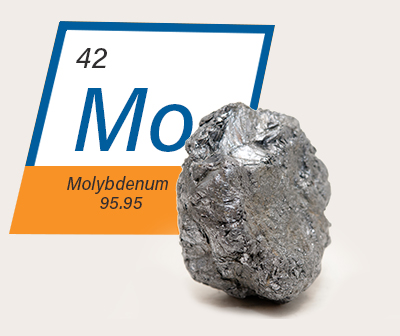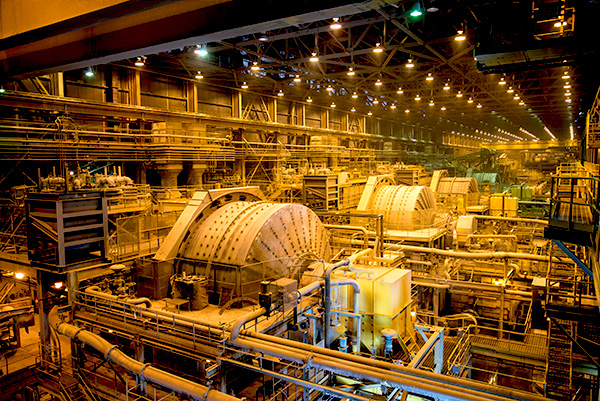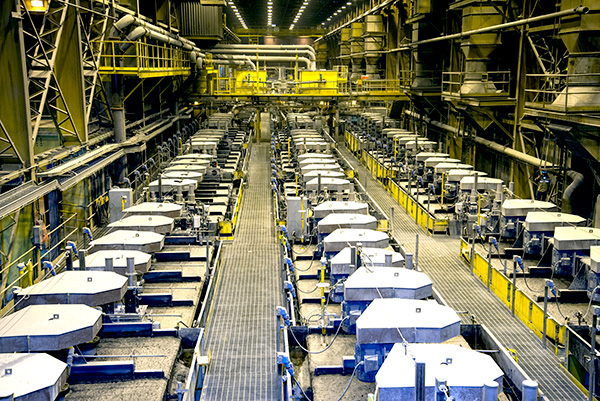 Molybdenum (often referred to as “Moly”) is an important metal in both the industrial world and our daily lives. It was found to be a distinct element by Carl Wilhelm Scheele in 1778 but retained its name from the Greek word ‘molybdos’ or lead-like. In its pure state, molybdenum is a lustrous grey metal, somewhat heavier than iron but melting at a much higher temperature – 4730 degrees Fahrenheit as compared with 2795 degrees Fahrenheit for iron.
Molybdenum (often referred to as “Moly”) is an important metal in both the industrial world and our daily lives. It was found to be a distinct element by Carl Wilhelm Scheele in 1778 but retained its name from the Greek word ‘molybdos’ or lead-like. In its pure state, molybdenum is a lustrous grey metal, somewhat heavier than iron but melting at a much higher temperature – 4730 degrees Fahrenheit as compared with 2795 degrees Fahrenheit for iron.
Where Does Molybdenum Come From?
Molybdenum is found all over the world but only a few deposits warrant the extensive mining, milling and processing facilities necessary for its economic recovery. The main sources today are the United States, Chile and China as well as Canada, Peru and CIS.
 Molybdenum is obtained from two different types of mines: primary mines and by-product mines. At primary mines its recovery is the prime target of the mining operation. Climax Molybdenum Company, a subsidiary of Freeport-McMoRan, has two primary mines in Colorado, with the Henderson mine currently operating half a mile under the Continental Divide. More than 2,000 pounds of ore must be mined underground, crushed and milled to recover some four to six pounds of molybdenum. The Climax Mine is located approximately 13 miles northeast of Leadville, Colorado and is a porphyry molybdenum deposit with molybdenite as the primary sulfide mineral.
Molybdenum is obtained from two different types of mines: primary mines and by-product mines. At primary mines its recovery is the prime target of the mining operation. Climax Molybdenum Company, a subsidiary of Freeport-McMoRan, has two primary mines in Colorado, with the Henderson mine currently operating half a mile under the Continental Divide. More than 2,000 pounds of ore must be mined underground, crushed and milled to recover some four to six pounds of molybdenum. The Climax Mine is located approximately 13 miles northeast of Leadville, Colorado and is a porphyry molybdenum deposit with molybdenite as the primary sulfide mineral.
 The other major source of molybdenum is by-product from copper mines in the western part of the United States, Canada, Chile, Mexico and Peru. We own and operate the Sierrita and Bagdad copper mines in Arizona. At both locations, the recovery of copper is the prime target; however, substantial quantities of molybdenum are also recovered.
The other major source of molybdenum is by-product from copper mines in the western part of the United States, Canada, Chile, Mexico and Peru. We own and operate the Sierrita and Bagdad copper mines in Arizona. At both locations, the recovery of copper is the prime target; however, substantial quantities of molybdenum are also recovered.
The molybdenum-containing mineral (molybdenite) is obtained from the ore at the mines by a series of crushing, grinding and flotation operations, which produce a concentrate consisting primarily of the molybdenite mineral.
How is Molybdenum Used?
Most of the molybdenum concentrate is roasted to convert the sulfide to oxide, which is known as Technical Molybdic Oxide. Technical Oxide is the most common means of adding molybdenum to steel. Alternatively, a mixture of Technical Oxide and iron oxide can be reduced by aluminum in a thermite reaction to produce ferromolybdenum (also referred to as FeMo). Foundries generally use ferromolybdenum when adding molybdenum to cast irons and steels, and steel mills may prefer it to Technical Oxide for some types of steels.
The molybdenite concentrate can also be subjected to further processing to produce an upgraded product that can be used as a solid lubricant.
Pure Molybdic Oxide can be produced from Technical Oxide by either a sublimation process or a wet chemical process that also produces an ammonium molybdate. Pure Oxide is suitable for use by chemical and catalyst manufacturers, who cannot use Technical Oxide due to its impurity content.
Molybdenum metal powder is produced by hydrogen reduction of the Pure Oxide or an ammonium molybdate. The molybdenum metal powder has some uses as a powder, but is more often consolidated into usable forms by vacuum melting or by pressing and sintering.
Who Uses Molybdenum?
Almost everyone depends on molybdenum, even though they may not realize it. Molybdenum looks like many other grey metals, but is not used in an easily recognized form like, for example, copper or aluminum are used. Instead, moly is used as an addition to steels, irons and non-ferrous alloys or other ways in which the moly itself is never seen.
Everyone knows what copper and aluminum look like and can immediately identify a copper cable or aluminum can. But not many can look at a light bulb or a TV tube and tell which parts are made of molybdenum. On the other hand, the increasing popularity of lubricants containing Molysulfide© has extended from heavy industry to service stations and home workshops. The black color and the inclusion of the term ‘moly’ in the lubricant manufacturer’s trademark can identify these products.
What Does Molybdenum Do?
The demands of industry are becoming constantly more severe. Engineers require stronger, tougher materials with better hot strength, superior properties at low temperatures, more corrosion resistance and added wear resistance so they can design and build more efficient equipment to improve our lives. Molybdenum helps meet these demands. Just like other common alloying elements, such as chromium and nickel, molybdenum additions give alloy steel and iron a combination of strength, toughness and wear resistance not possible with unalloyed steels. It is used extensively because its inclusion (alone or with other alloying metals) results in a more economical and serviceable part. Moreover, molybdenum makes a unique contribution to hot strength, corrosion resistance and toughness.
Increased Hot Strength Increasing temperature raises the efficiency of most types of equipment from steam turbines in central power stations to gas turbines in jet planes and even automobiles. Relatively small molybdenum additions are in many cases the best means of increasing hot strength. This applies not only to steel but also to the nonferrous super-alloys with nickel or cobalt as a base. In some aerospace and metalworking applications, molybdenum metal – either pure or with small additions of other alloys – is needed as it stands up even at temperatures where steel melts.
Increased Corrosion Resistance Molybdenum additions give stainless steel greater corrosion resistance. Molybdenum-containing stainless steel is now specified in automotive trim for long life even along the seacoast and in contact with de-icing salts. In other grades, the added corrosion resistance resulting from molybdenum makes chemical processes industrially feasible that would otherwise be confined to the laboratory.
Increased Strength and Toughness Small amounts of molybdenum confer toughness to most steels including grades used at cryogenic temperatures for handling and containing liquid gases. Because of molybdenum’s contribution to strength and toughness, low-alloy molybdenum containing steels offer safety and economy in pipelines for oil and natural gas even under arctic conditions. Pure molybdenum metal is used in many applications such as electronics, glass melting and high temperature furnaces.
Chemical and Lubrication Uses While metals account for the largest part of molybdenum’s consumption, its chemical and lubrication uses are also important. Like metallurgical uses, major chemical uses go unnoticed despite their many contributions.
Desulfurization The use of molybdenum in desulfurization catalysts allows the sulfur level of fuels to be lowered, thus helping to meet the increasingly stringent fuel oil quality demands.
Corrosion Inhibition and Pigments Molybdenum salts act as effective corrosion inhibitors in products such as engine coolants and water treatment systems. They are also used in the production of traditional and new inorganic pigments.
Smoke Suppressants and Solid Lubrication Molybdenum compounds function as smoke suppressants in polymer systems, reducing the risks associated with the flammability of such materials. High purity grades of the naturally occurring MoS2 act as solid lubricants in products such as greases, dispersion and bonded coatings.





